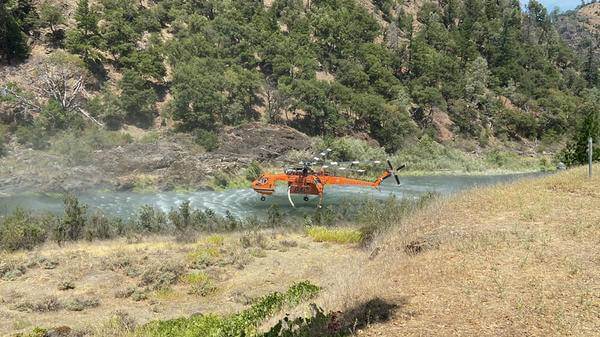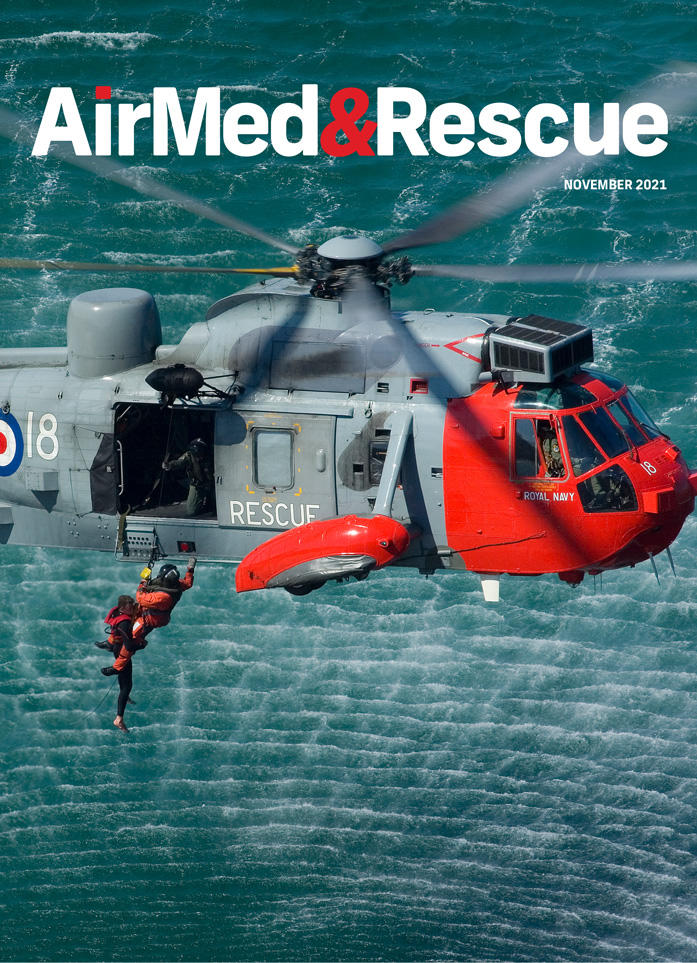What are the latest innovations in wildland firefighting?

Erickson outlines why communication is key to finding solutions to wildland firefighting
Worldwide fire seasons are gaining in intensity. 2021 brought some of the most extreme fire seasons worldwide, and they are becoming more severe annually, escalating the loss of life and property. Improvements to technology are more important than ever, and knowledge and collaboration are essential tools to understanding fire.
However, Jeffrey Baxter, Senior Director of Research and Development at Erickson, noted that the costs have also escalated. In a 2021 Institute for Defense and Government Advancement virtual conference on disaster management, Baxter explained how in 2000, it cost approximately US$50 million a year to fight wildland fires, and in 2020 that cost had escalated to approximately $50 billion – around $150 per person in the US.
Can innovations decrease the length and severity of fire seasons? The conference featured both Baxter and Erick Nodland, Vice President of Aviation Center of Excellence for Erickson, leading a panel exploring the challenges and opportunities using modern technologies for wildland firefighting, including representatives from the US Forest Service and the National Oceanic and Atmospheric Administration (NOAA).
The largest issue revealed was not a lack of data or partners working toward mitigation of serious wildfires, but that the variety of domestic and international agencies may not be working together to share information. Baxter said: “I have yet to see a cohesive outcome from detection to response. I have yet to see a competent setup of tools all along that path.”
Bob Baird of the US Forest Service said: “There’s no one tool that fits all.” Between the US Forest Service, NOAA, other firefighting and forest management agencies, and private entities like Erickson, there are many solutions between data collection, surveillance, and nighttime/drone firefighting. It will take a collective effort between all groups to mitigate the spread of serious fires. Communication and sharing are key to solving this global issue
Top innovations for wildland firefighting
Data-crunching Software
Big data is the name of the game in the early 2020s. Collecting information from geo or navigational mapping, especially aerial mapping can help communicate fire risk in certain regions. A variety of fire data software is actively culling information for public and private groups around fire risk: think Google Maps or a high-end industry software with a specific function for firefighting agencies.
Space | Satellite Surveillance
Space surveillance can demonstrate radiometer data that comes directly from NOAA, which runs the Satellite and Information Service that supplies software called FIMMA for Advanced Very High-Resolution Radiometer (AVHRR) data from the NOAA polarorbiting satellites. NOAA can provide high-resolution images, which are used to detect fires from space. NOAA’s Mitch Goldberg said they can capture satellite images from space every 30 seconds. They can also merge that data into weather forecasts and other communications that are tied directly to firefighting.
Terrestrial | Land Surveillance
Both NOAA and the US Forest Service agree that early fire detection is key to decreasing wildfire severity. The US Forest Service offers land and space surveillance. They watch changes in forests, including on trees and environmental changes. They focus on climate change due to human activity, and they offer data tools for research on their website.
Nighttime or drone firefighting
Baxter cited many reasons for the absence of nighttime firefighting or even drone firefighting. For example, a lack of clear maps of all obstacles from powerlines to structures and more. He said: “During daylight hours, you can see these items when flying over them.” But at night, even with night vision goggles, it can be unsafe for the pilot and crew to be deployed. One primary obstacle is having to stop firefighting at night. The Forest Service offers nighttime firefighting with night vision goggles. Erickson also offers the night vision goggles as an option and is developing new ways to supply safer development of nighttime firefighting in partnership with Sikorsky and MATRIX technology.

October 2021
Issue
- The demand for automation reveals its shortcomings meeting the human factor
- How virtual and augmented reality meets the needs of SAR/HEMS training
- Keeping critical communications infrastructure live during Hurricane Ida
- How logistics is the critical challenge of neonatal air transport
- The latest SAR equipment that pairs innovation with affordability
- Interview with Rob Pennel about the EASA South East Asia Partnership Program
- And more
Erickson Incorporated
Erickson is a leading aerospace manufacturer and global provider of aviation services that operates, maintains and manufactures utility aircraft to safely transport and place people and cargo around the world.




